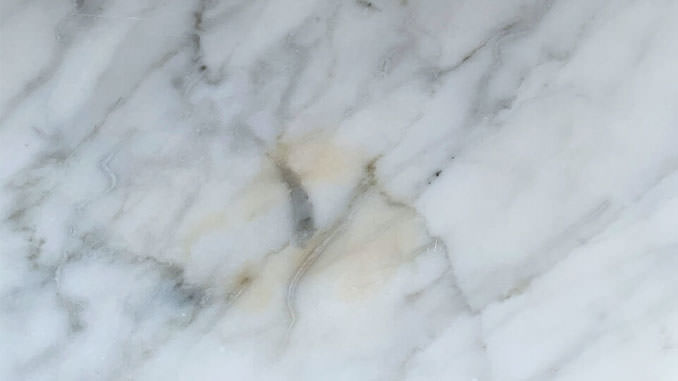
If at home we have marble, perhaps ancient and placed on a precious piece of furniture, to remove stubborn stains, there are mistakes not to be made, since not only would they end up further worsening the situation, but the risk is to damage the structure irreparably.
In the following steps of this list, we see what should not be done on marble in the presence of hostile stains.
Use too many abrasive products.
If the marble stains are difficult to remove, never use too abrasive products such as metal flakes since there is a risk of excessively scratching the marble surface, especially if it is particularly worked or rich in natural veins. It is better to use very thin (triple zero) emery cloth wet in water and other liquid substances such as neutral soap if it is essential.
Use acids
Acids must not be used on the marble since there is a real risk that the part may melt, especially if it is a little hard marble, such as granite. Instead of alcohol, the idea is that once the stain has been removed, it forces us to give back shine to the structure as it creates an unsightly whitish halo. The marble wax is the best solution to optimize the result.
Scratch with a cutter
Just as scrubbing with excessively abrasive elements, even scratching, for example, with a cutter is a mistake to avoid to remove stubborn stains from the marble, as in addition to scratches, some previous restoration could also be removed, thus creating grooves or cracks entirely unsightly. A leather slice is undoubtedly better, as it makes good friction on the surface but does not scratch.
Use dyes
Many people in hostile stains on marble do not know how to solve the problem and opt for an extreme solution for using dyes. It is an inappropriate choice since, over time, they lose their shine, and on the part, an unsightly and even more visible halo is created. Perhaps with the addition of aniline of the same color as the marble, the wax is also suitable for uniforming the entire shelf after removing the stain.
Use stain removers for clothes.
Using stain removers is not a good idea since if they mitigate or eliminate hostile stains, on the other, they release an unsightly halo and create porosities on the surface which, then become difficult to uniform with the shelf. Instead, the advice is to create a bland but effective abrasive paste at home, mixing sodium bicarbonate, lemon, and beeswax.